The last time I wrote about Nara here was in September 2022. Japan was still closed to non-citizens then, and had only recently stopped requiring quarantine and multiple rounds of COVID tests to enter. This feels like a dream now, because everyone is in Japan right now, including you, and every time I go back it is only more crowded. I am still shook by the crowds in Nara, of which I feel more than a little protective. If you go to Nara, DO NOT FEED THE DEER anything except the sembei that is sold specifically for this purpose!
Despite my grumpiness, I understand why there are so many visitors to Japan and I am also part of the crowds choking up what must have been much quieter spots.
I write this then, to point out some foods that you might have missed during your trip and to walk you through my attempts to recreate one of these specialties - zundamochi (edamame mochi) at home. I previously wrote about regional sweets (that are often brought as omiyage) here and here.
I spent part of my most recent trip in Niigata, a prefecture that I had never visited until earlier last year, after a friend with impeccable taste recommended Satoyama Jujo in Minami-uonuma (a city you might recognize if you order your rice from Rice Factory). Niigata is the leading producer of rice and rice-derived products: think sake and sembei (rice crackers).
We participated in a foraging tour of the Satoyama Jujo grounds before dinner.
I am admittedly not on the firmest footing, having been to a very limited (Echigo area) of Niigata just twice (to stay at Satoyama Jujo and to ski at Gala Yuzawa), but am nonetheless noting two sweets that I purchased at the Echigo Yuzawa train station. Niigata is absolutely beautiful (so many mountains) and I cannot wait to more thoroughly explore the region.
As the sign below states, Echigo is known for its sasa dango, or dango wrapped in sasa leaves (sasa, according to wikipedia, is a broad-leaf bamboo). The dango are perfumed with yomogi, or mugwort and filled with anko (red bean paste). The sasa has antibacterial properties while also lending its own scent to the dango.
In addition to sasamochi, I bought (and recommend that you do too!) an edamame daifuku at the Echigo Yuzawa station.
The Tohoku (northeastern) regions of Japan are fond of sweets made of sweetened edamame, most famously the zundamochi1 in Miyagi (especially in its capital of Sendai). Perhaps someone familiar with the region can explain more, but while I could not find much when searching for 新潟 (Niigata) and ずんだ餅 (zundamochi) to supplement the premise that zundamochi are also found outside of Sendai, I did find these Maruya Honten edamame daifuku which boast of their provenance from Echigo. Is Echigo also known more broadly for edamame daifuku and not for zundamochi? What other edamame sweets are there? Someone please share!
Edamame daifuku (young soy bean jam)
While sourcing sasa leaves seemed a bit of a high bar and shaping a daifuku felt too ambitious, I thought that I could cobble together some internet recipes to create an approximation of zundamochi in my Brooklyn home. It seems that most recipes are based on mashing together edamame, sugar, and a pinch of salt. The amount of sugar seems to start at 15g (~1 tablespoons of sugar) per 75g of shelled edamame, but can go as high as 60g (~4 tablespoons). Like with all things, it seems that sweetness is to taste. They also range from relying on mochi (from a packet like this) to making shiratama dango as a base (like this) and from relying on frozen edamame or steaming them from fresh (and peeling each bean once the beans have been separated from their shells).
The coarseness of your bean paste can range from chunky to smooth.
If you’d like to follow along - here is the version (a very lazy after work version with apologies to Miyagi and all of Tohoku)
Lazy zundamochi
Edamame (frozen) - 75g
Sugar - 15g (a heaping tablespoon
Pinch of salt
Microwave edamame until soft and put into a mortar. Grind with sugar and salt.
I left it very coarse, but will likely use my blender next time for a smoother an-like consistency. I also imagine that for ultimate smoothness it is best to peel each bean.
Heap on top of mochi. Today I happened to steam some mochi rice and make mochi in a stand mixer.
Heap edamame mixture on mochi.
The name “zunda mochi” comes from ずんだ(豆ん打) - the sound of beans being pounded. Edamame were abundant in Miyagi and this dish was commonly eaten around Obon (during the summer months) in conjunction with the harvest.




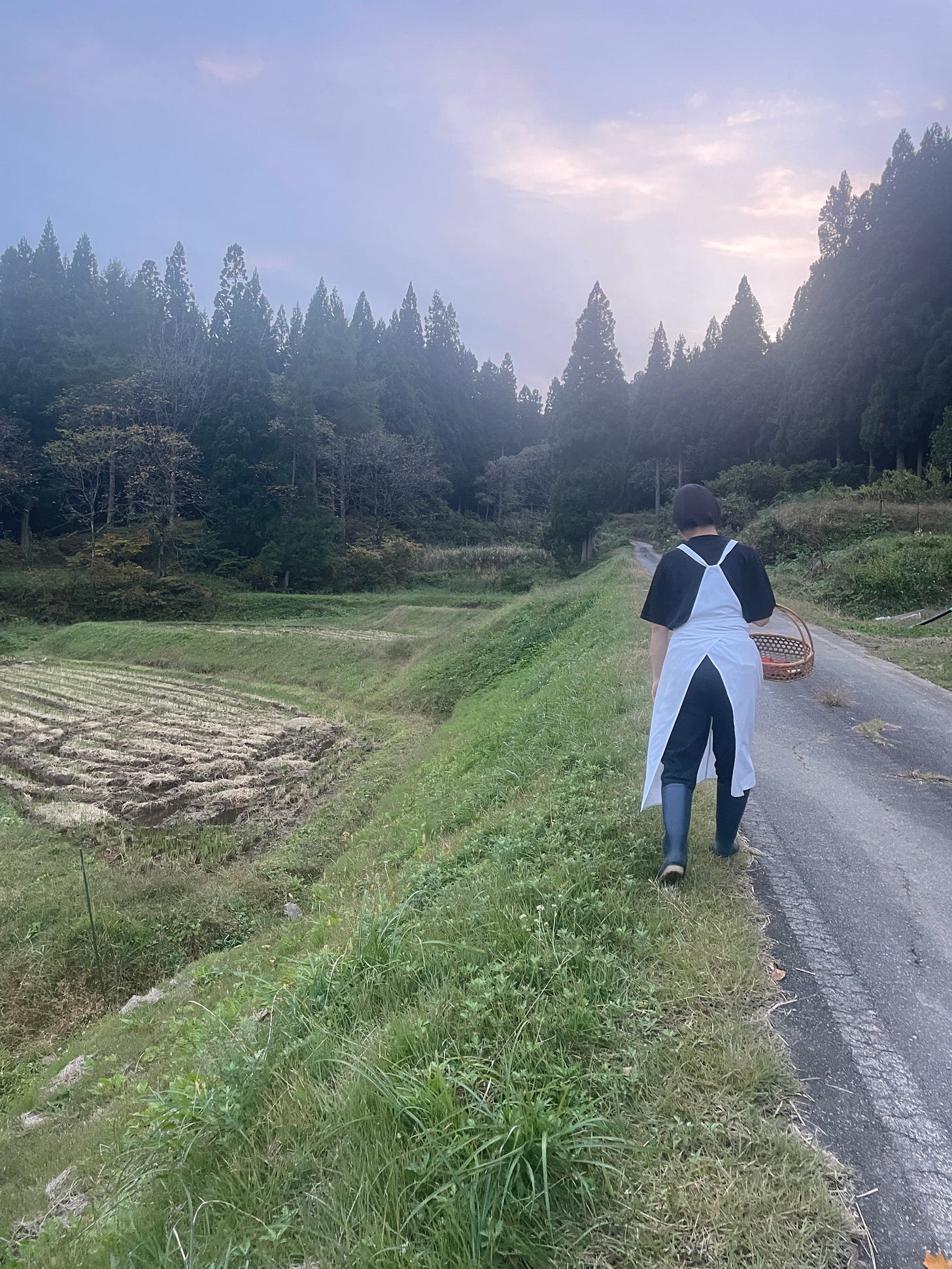
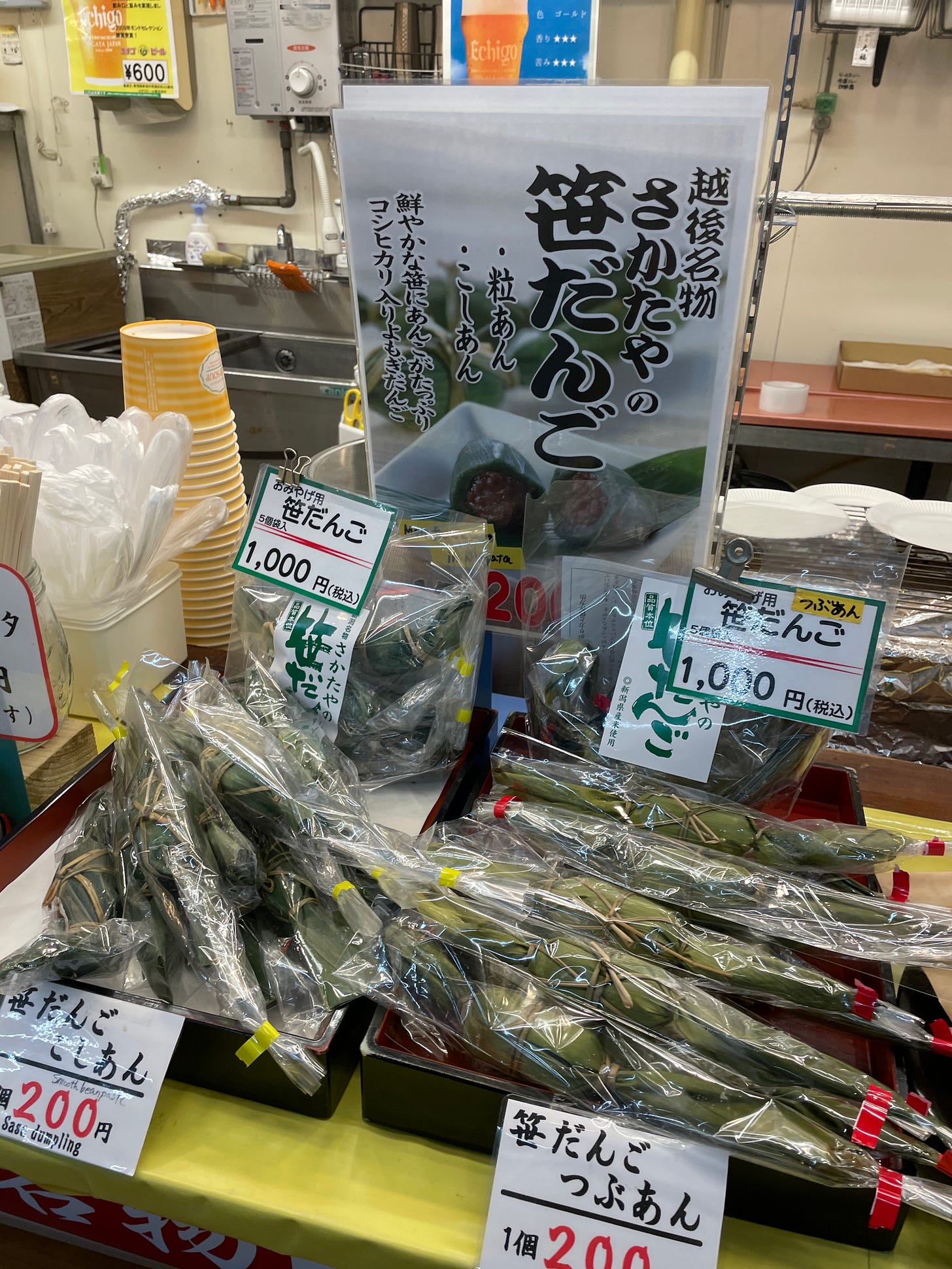
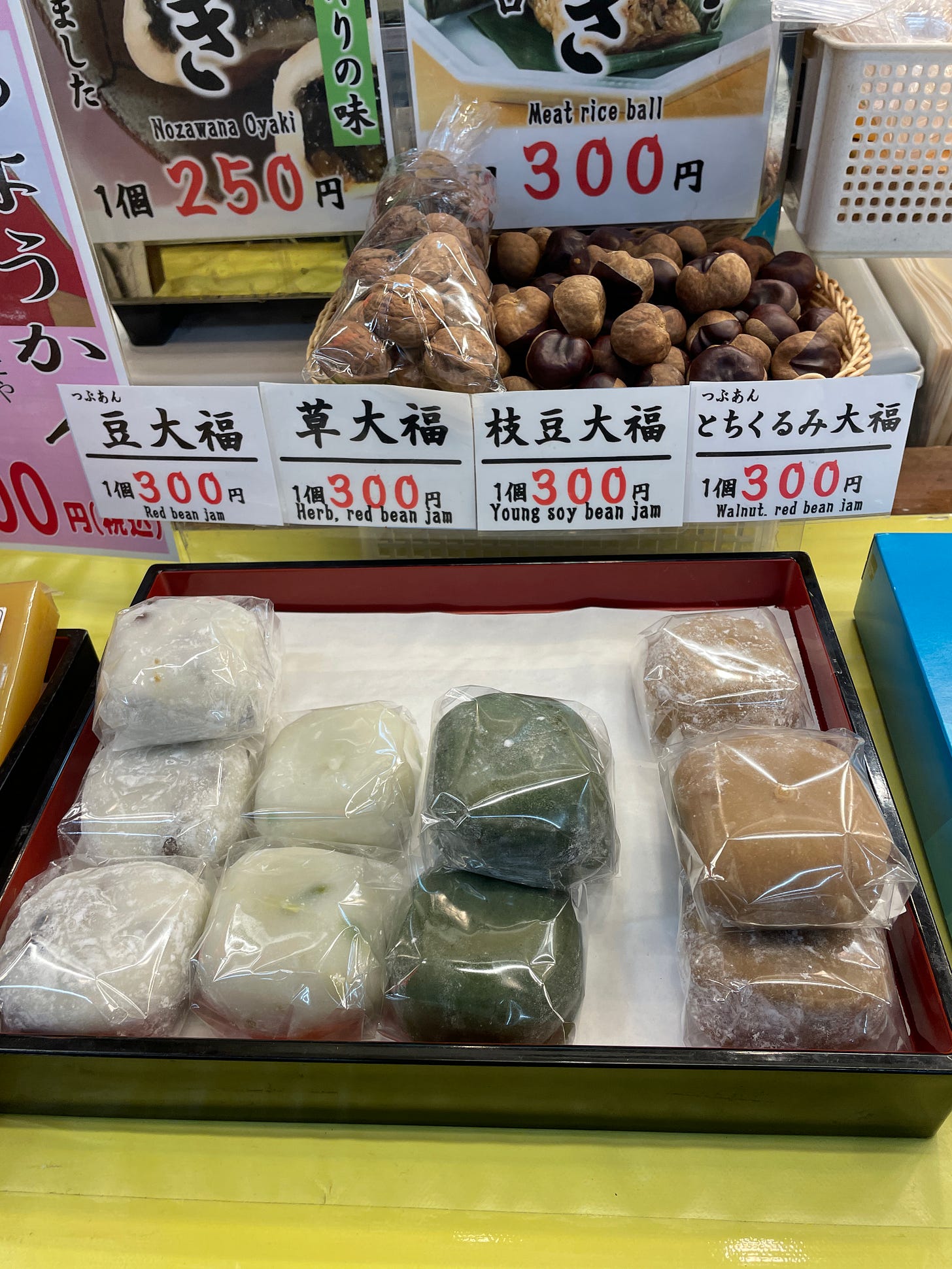


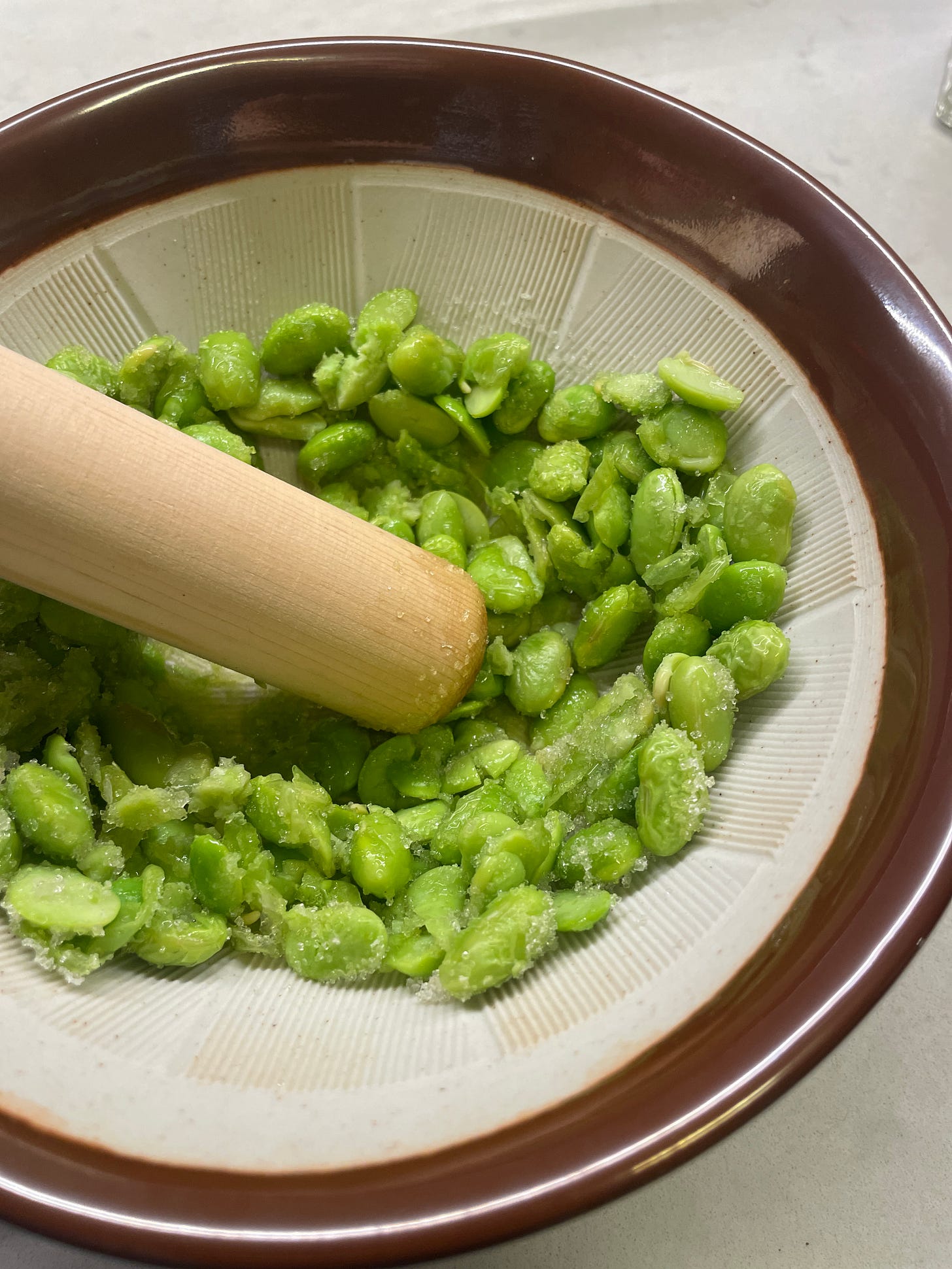
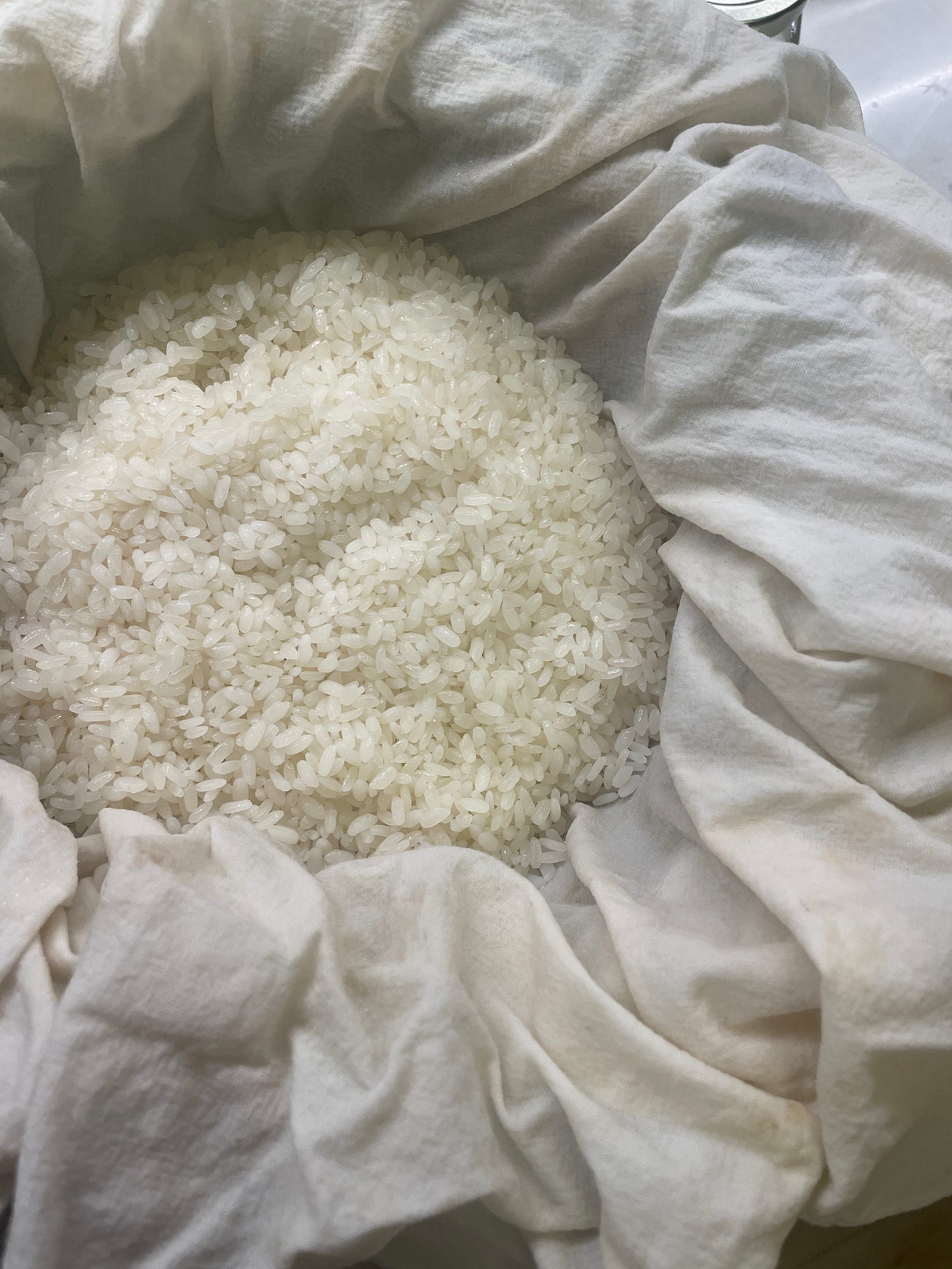

Thank you for featuring Niigata! Sasadango was the first thing I ate in Japan because I was too scared to go in a shop and I was given them by a fellow teacher. Such a great post! Did you find any kakinotane sembe?